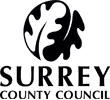Raised tables should be used at mid-link crossing points and junctions to calm traffic and provide a safer, more convenient crossing points for pedestrians.
They should be constructed on pedestrian desire lines, such as crossing between shops and services or street intersections.
They should be level with the adjacent pavement and constructed in the same material as the pavement to clearly show that the table is an extension of pedestrian space.
Where the footway is also constructed in asphalt, the table crossing should be constructed using a different contrasting material such as block paving.
Asphalt raised table crossings can be used in conjunction with a ‘zebra’ crossing on primary streets where pedestrian numbers and traffic levels permit. In all other cases, road markings should not be used on the raised tables themselves.
The ramps either side of the table must be of a shallow gradient, ideally sinusoidal, and constructed in a smooth material to be as comfortable for cyclists.
Rough stone setts should be avoided.
At junctions, raised tables act in a similar way to a continuous crossing, giving pedestrians priority over the junction and requiring vehicles to slow and give way.
They must not be used at junctions on Primary Streets (street type 1) or high activity High Streets (street type 2(a)) and should not be used on Secondary streets (street type 3) where there are high vehicle movements.
This must be assessed on a case-by-case basis. In all cases consideration must be given to how visually impaired pedestrians will navigate the space.
There is no need to continue the kerb line at raised tables junctions in new streets, although this may be necessary for retrofit schemes where retaining the kerb will simplify design and construction.
Street furniture and trees can be used to provide some informal, permeable separation between pedestrians and vehicles.
The carriageway should be narrowed at raised tables, ideally using street trees or other planting, to reduce the crossing distance and help reduce vehicle speed as much as possible.
In this section
- 5.1 Carriageway vision
- 5.2 Continuous pavements (often called Copenhagen crossings)
- 5.3 Raised Tables
- 5.4 Carriageway widths and tracking (swept path analysis)
- 5.5 Traffic calming
- 5.6 20mph streets
- 5.7 Junction geometry and characteristics
- 5.8 Staggered Junctions
- 5.9 Turning Heads
- 5.10 Materials guidance
- 5.11 Pedestrian and cycle crossings
- 5.12 Artwork on Crossings
- 5.13 Road Markings
- 5.14 Accessibility considerations
- 5.15 Safety considerations for streets with high vehicle volumes and/or speeds
